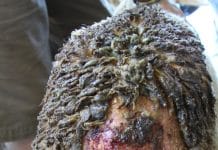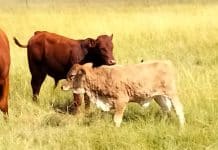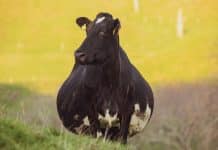South Africa is known for its rich insect diversity, which of course includes bees. According to the Agricultural Research Council, there are 2 755 recorded bee species in sub-Saharan Africa. Of these, approximately 1 000 are found in South Africa, and many of them are endemic to the Fynbos and Succulent Karoo areas.
However, only two sub-species of honeybee are indigenous to South Africa: the African bee (Apis mellifera scutellata) and the Cape bee (Apis mellifera capensis). The Cape bee’s habitat is the Fynbos region and the surrounding western and southern Cape areas. The African bee is confined to the region north of the Fynbos area.
Bees play an instrumental role in supporting biodiversity and various ecosystems, both locally and globally. Most importantly, these insects are the world’s primary crop pollinators and, according to the Western Cape Government, more than 50 different crops that are cultivated in South Africa, rely on honeybees. In short, bees are one of the main drivers of the agricultural sector and are largely responsible for the pollination of 40 to 70% of indigenous flowering plants.
According to Dr Annalie Melin, a postdoctoral research fellow at the Centre for Statistics in Ecology, Environment and Conservation at the University of Cape Town’s Faculty of Science, several threats to the environment have placed bee species across the world in a vulnerable position. The honeybee population’s rapid decline is not just a local phenomenon, but a global crisis.

Bees’ contribution to agriculture
Worldwide pollinators, including honeybees, annually pollinate crops worth roughly $170 billion. This affects 35% of the world’s crop production. In the United States, bees support approximately $20 billion worth of crop production on an annual basis. The South African fruit industry, which earns R7 billion each year, depends on the survival of the honeybee.
Bees are excellent pollinators and visit more than 90% of the leading 107 crop types worldwide, which means that they significantly boost food security and increase farmers’ profitability. Proper pollination allows for a reliable and diverse seed and fruit supply, which improves crop quality. Many of the crops that depend on pollination, are sources of important micronutrients, which means that bees contribute indirectly to our daily vitamin intake.
Healthy bee colonies also contribute indirectly to increased job opportunities in the agricultural sector. Bountiful crops lead to higher company profits, paving the way for business growth and economic expansion. Successful agricultural businesses lead to stronger economies, which are key to ensuring food security and providing countries with resources to alleviate poverty.
According to a study by Greenpeace Research Laboratories, no single factor can be blamed for the overall global decline in bee populations or the deteriorating health of bee colonies. Instead, multiple factors are responsible for the decline, some of which more damaging than others.
The most prominent factors that affect bee health relate to modern agricultural practices. These practices influence their life cycle, diseases and parasites that plague them and cause habitat loss. Pesticide use is another major concern.
Boosting bee immunity
To protect themselves from parasites and other pathogens, honeybees coat nest cavity surfaces with propolis, a resinous mixture that they produce by mixing saliva and beeswax with exudate gathered from botanical sources. This practice enables them to economise on the activation of their immune system, which lowers energy expenditure and improves longevity.
For bees to make propolis, they must collect plant resins from raw ingredients such as twigs, tree bark or leaf buds. Resin has various antifungal, antiviral, antibacterial and anti-inflammatory properties and is an important component of the colony’s social immune system.
Unlike other insects, bees lack important genes that boost immune function, which stresses the importance of resin collection and the availability of various resin sources. Many resin sources are reduced in modern agricultural and highly industrialised areas.
However, for bees to produce propolis and to pass on important genetic molecules to other bees within the colony to increase their chances of survival, they will need ample foraging and habitat space to find and utilise various resin sources.
In an article published in the American Bee Journal, writer and biologist Thomas D Seeley suggests that beekeepers and farmers interested in boosting bee health, should invest in bee boxes made of rough-sawn timber. The irregular interior surface of the box will encourage propolis deposition and the formation of an anti-microbial envelope that will enhance the entire colony’s immune system.

The influence of pesticides
According to the Department of Environment, Forestry and Fisheries (DEFF), there is uncertainty regarding pesticides’ contribution to the decline in pollinator health due to a lack of research.
According to DEFF, the data requirements for the registration of agricultural remedies have been stipulated in the Guidelines
on data requirements for agricultural remedies and the Guideline for the registration process for agricultural remedies. Each pesticide must undergo an environmental impact assessment, which includes data such as the LD50 oral and dermal values for honeybees.
LD50 values indicate the amount of solid or liquid material that should be administered for a substance to kill 50% of test animals in one dose. LD50 data that follow the Organisation for Economic Co-operation and Development (OECD) guidelines is required for the registration of any pesticide.
Based on the data and the contact LD50 value, the product or remedy will then be classified as:
- Non‐toxic
(LD50 ≥11 μg/bee). - Moderately
toxic (10,9 > LD50 >2 μg/bee). - Highly toxic
(<2 μg/bee).
Insecticides are used on almost all major crops in South Africa and are divided into specified chemical classes. According to CropLife SA, not all chemicals belonging to the class of neonicotinoids have significant hazardous potential when it comes to honeybees, due to substantial differences in their respective oral and contact toxicity.
It is thus scientifically questionable whether this group of chemicals pose a toxicological threat to bees. Crop Life SA further states that some molecules are more toxic to bees than others, but it depends on how these molecules are applied that determine whether the toxicity will result in bee mortality.

Applying pesticides responsibly
According to DEFF, farmers can limit bees’ exposure to pesticides in several ways. Contact with pesticide dust, which vacuum-pneumatic seeders often release into the air, can be avoided by enhancing the quality of the seed dressing, using a pneumatic seeding machine designed to minimise the output of pesticide dust and by sowing seed at wind speeds that do not exceed 5m/second.
If farmers use pesticide sprays, they should select the least harmful pesticide for insect pollinators and spray either late in the afternoon or at night. Spraying in conditions in which the pesticide might drift onto adjacent fields should be avoided. By informing nearby farmers and beekeepers of spraying schedules, farmers can work with other agricultural role-players to protect honeybees. It is also crucial to adhere to the pesticide label instructions relating to restrictions in terms of managed bee pollination.
To mitigate pesticide damage when it comes to deciduous fruit and sub-tropical fruit, it is best to notify the beekeeper if there are beehives in the vicinity of the spray area. If possible, it is best to remove the beehives beforehand, which would require timeous communication between farmers and beekeepers. When spraying, use buffer zones as a mechanism to reduce the impact of spray drift. It is also important to prevent the contamination of surface water that honeybees and other pollinators utilise.
Local beekeepers know best
Kai Hichert, vice-chairperson of Southerns Beekeeping Association and board member of the South African Bee Industry Organisation (SABIO), is a well-known beekeeper in Johannesburg. According to him, SABIO is working with CropLife SA to educate farmers on the responsible use of pesticides.
“Beekeepers sometimes have to remove up to 400 to 500 bee boxes from a farm to get the bees out of harm’s way before pesticides can be applied to crops. Farmers can help to boost bee populations by providing beekeepers with a small portion of land where they can safely house their bee boxes when pesticide is being applied. They can also plant a variety of flowers, herbs or trees on their farm to help sustain bees, especially if they use bee pollination,” Kai says.
Although Eucalyptus trees are invasive alien species, Kai says they are also one of the best sources of bee food in the world. “Instead of using Eucalyptus trees on your farm as a firewood resource, place a couple of bee boxes nearby to encourage bee population growth.
“Bees can travel 3 to 6km to find food, but placing bee boxes near food sources such as buffalo thorn trees, sweet thorn trees, paperbark acacia trees, lavender, basil, cosmos, rosemary or sunflowers is a small but significant contribution that farmers can make toward sustaining and protecting bees,” he concludes.

The effects of farming practices
A recent global study that investigated the effects that different farming practices and various agricultural landscapes have on bees found that organic farming practices benefited bee colonies the most.
The study showed that bee diversity was elevated in organically farmed fields, in smaller fields harbouring various crops and in fields with much non-crop vegetation. Compared to colonies living in conventionally farmed areas, colonies living amid organically farmed fields boasted 37% more brood, 20% more adult bees, and 53% more honey production.
In areas that were farmed intensively and had little biodiversity, bee populations were at their lowest. However, bees living in intensive farming areas benefited from high-quality surrounding habitats.
Based on the study, several recommendations were made to mitigate the impact of commercial agriculture and to boost bee populations:
- Increase the amount of natural habitat in the surrounding landscape. Results from the study indicate that for every additional 10% increase in bee habitat, bee abundance may increase by an average of 37%.
- Increase the use of mass flowering crops in rotation.
- Switch from conventional farming practices to organic farming wherever possible.
- Establish wildflower strips alongside or near crop fields.
- Protect flowering plants, natural vegetation and beehive sites on your farm.
- If you are unsure of how to protect local bees during insecticide spraying seasons, discuss your spraying regime with a local beekeeping association. – Claudi Nortje, FarmBiz
For more information on how to protect local bee colonies, visit www.sabio.org.za or send an email to Kai Hichert at hichert@worldonline.co.za.







